|
Size: 1573
Comment:
|
Size: 3668
Comment:
|
| Deletions are marked like this. | Additions are marked like this. |
| Line 2: | Line 2: |
| {{attachment:SpaceBalloon.jpg|SpaceBalloon|width="400"}} {{attachment:SpaceBalloon_1.jpg|SpaceBalloon_1|width="400"}}{{attachment:SpaceBalloon_2.jpg|SpaceBalloon_2|width="300"}} {{attachment:SpaceBalloon_3.jpg|SpaceBalloon_3|width="300"}}{{attachment:SpaceBalloon_4.jpg|SpaceBalloon_4|width="300"}} | |
| Line 3: | Line 4: |
| This is just a suggestion for a possible starter project. We'd use a weather balloon to send a payload of our design to the edge of space - about 120k feet. This would require a good deal of development and planning, and a little bit of money. It's certainly something that could be done by spring as a send off for our graduating seniors. | November 2014 Payload finally recovered! |
| Line 5: | Line 6: |
| [[http://www.sparkfun.com/tutorials/180|Sparkfun]] has a pretty decent walkthrough that even prepares you for the distinct possibility of sending a grand worth of electronics aloft and never recovering it. | {{attachment:SpaceBalloon5.jpg|SpaceBalloon5|width="400"}} {{attachment:SpaceBalloon_6.jpg|SpaceBalloon_6|width="400"}}{{attachment:SpaceBalloon_7.jpg|SpaceBalloon_7|width="300"}} {{attachment:SpaceBalloon_8.jpg|SpaceBalloon_8|width="300"}}{{attachment:SpaceBalloon_9.jpg|SpaceBalloon_9|width="300"}} {{attachment:SpaceBalloon_10.jpg|SpaceBalloon_10|width="300"}} Why wouldn't you want to do view the world from 100,000'? This project used a weather balloon on 16 May 2014 to send a payload of our design contaning a GPS transmitter and photosnapping cell phone to the edge of space - about 100k feet. Watch the launch: http://youtu.be/Lu-SKAhpXSM The site [[http://www.sparkfun.com/tutorials/180|Sparkfun]] has a pretty decent walkthrough that even prepares you for the distinct possibility of sending a grand worth of electronics aloft and never recovering it. Check out http://www.youtube.com/watch?v=wtXquYhY7wo. This has become rather a rage. |
| Line 8: | Line 19: |
| * '''Balloon dynamics''' - capacity, predicted altitude, predicted flight path, controlled descent, etc. * '''Tracking and recovery''' - Usually done with a GPS and RF transmitter. There are some designs that use a smartphone. * '''Pretty pictures''' - Video of ascents, the balloon popping, etc are all really neat. Still images of the curvature of Earth are amazing. All require effort and planning. * '''Data Logging''' - What other data would you like to see? |
|
| Line 13: | Line 20: |
| This would cost money and we'd have to figure that out, too. Minimum cost is about $150 for just the balloon and helium with no electronics or payload. The sparkfun balloon ran $1200. We could run it off of individual contributions or do a few pizza sales in the lobby. Thoughts? | * '''Balloon dynamics''' - capacity, predicted altitude, [[http://predict.habhub.org/|predicted flight path]], controlled descent, etc. * '''Tracking and recovery''' - Currently looking at the [[http://www.amazon.com/Vehicle-Realtime-Tracker-Tracking-System/dp/B0089C15ZK|TK-102]] for tracking. It makes it easyt o track through SMS, but lacks altitude tracking. * '''Pretty pictures''' - Videos, telescopic images, or even [[http://chris-stubbs.co.uk/wp/?p=375|live imaging]] using CHDK and a simple radio transmitter. * '''Data Logging''' - What other data would you like to see? Pressure, [[http://www.radiation-watch.org/p/english.html|cosmic rays]], or fungal/bacterial spore load might be interesting. |
| Line 15: | Line 25: |
| Again, this is just a suggestion. If you have ideas for a group project, please post them! | Future payloads can be developed to: * Measure the gravitational constant, G * Measure the time dilation due to general relativity, as a function of altitude. Maybe you want to glide back from space? Check out FPV to Space and Back at http://rcexplorer.se/. You can just fly your (obsolete every year) iphone and use Find My Phone to recover it. See video above. BTW, there are bacteria up there, possibly to blame for the snow in Wisconsin. Maybe someone could bring back some air samples and some biologists could take a look, figure out how to alter the climate around here, in a good way, if that is imaginable. :) - Duncan http://www.nature.com/news/high-flying-bacteria-spark-interest-in-possible-climate-effects-1.12310 http://ngm.nationalgeographic.com/2013/01/microbes/wolfe-text --- Related: Rocket contest http://www.rocketcontest.org/ Registration for TARC 2014 is now open! Are you up for the challenge of building a rocket that can safely carry two raw eggs to a precise altitude of 825 in a total flight time of 48-50 seconds? Check out the full rules for more details on this year’s challenge. The 2014 Application Packet is now posted on www.rocketcontest.org. If you have any questions about forming a team or filling out the packet please don’t hesitate to email me at anne.ward@aia-aerospace.org . Want to work with other Wisconsin students on this or rockets? Check out http://www.uwgb.edu/WSGC/students/ssp.aspx FrontPage |
High Altitude Balloon
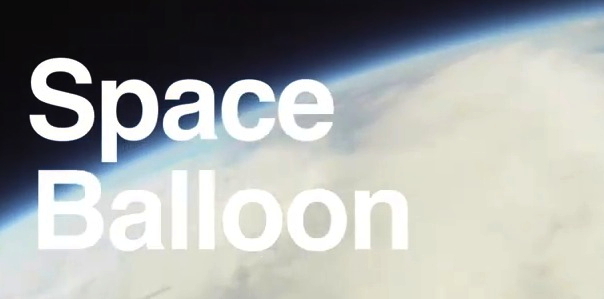
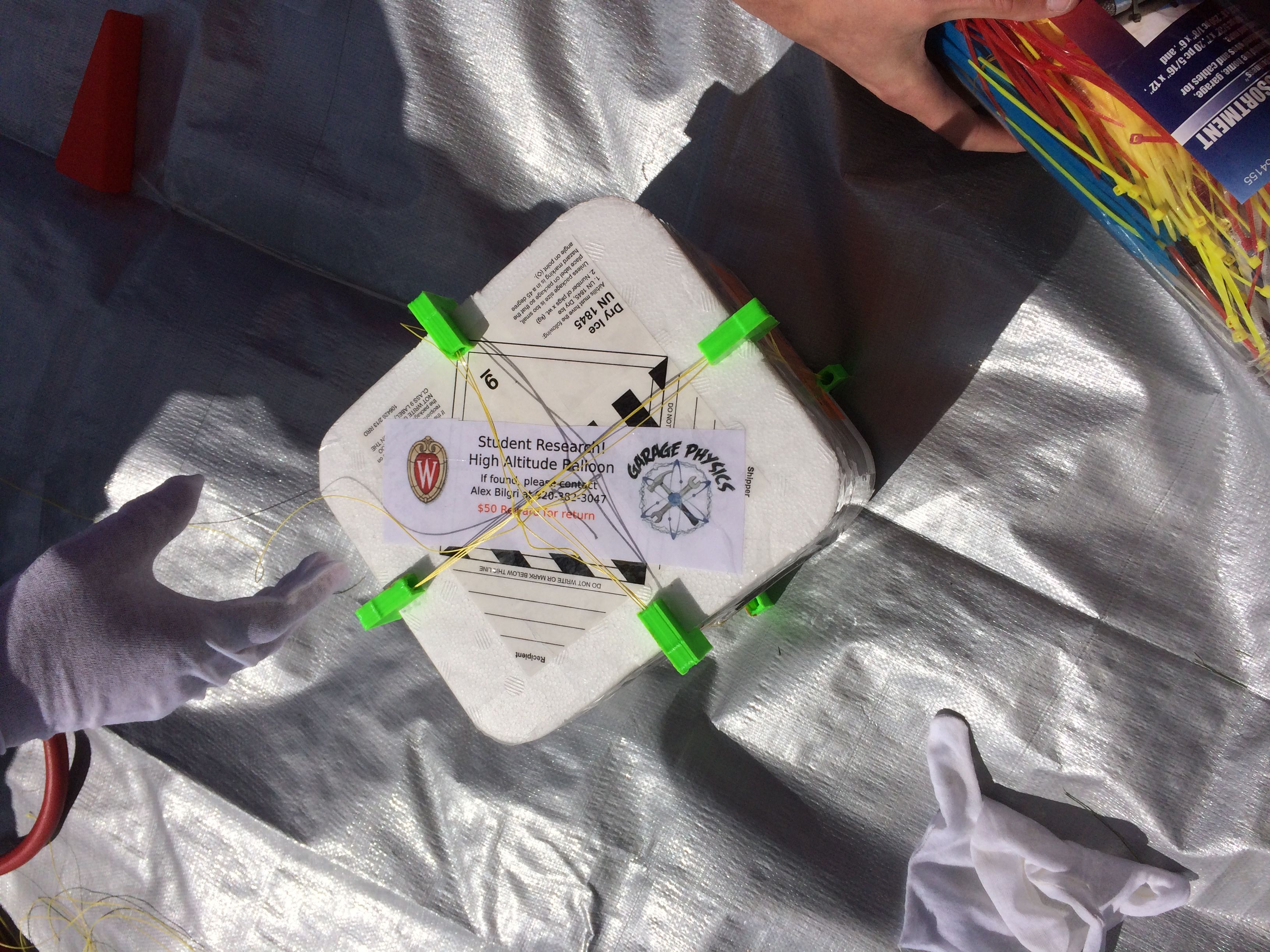
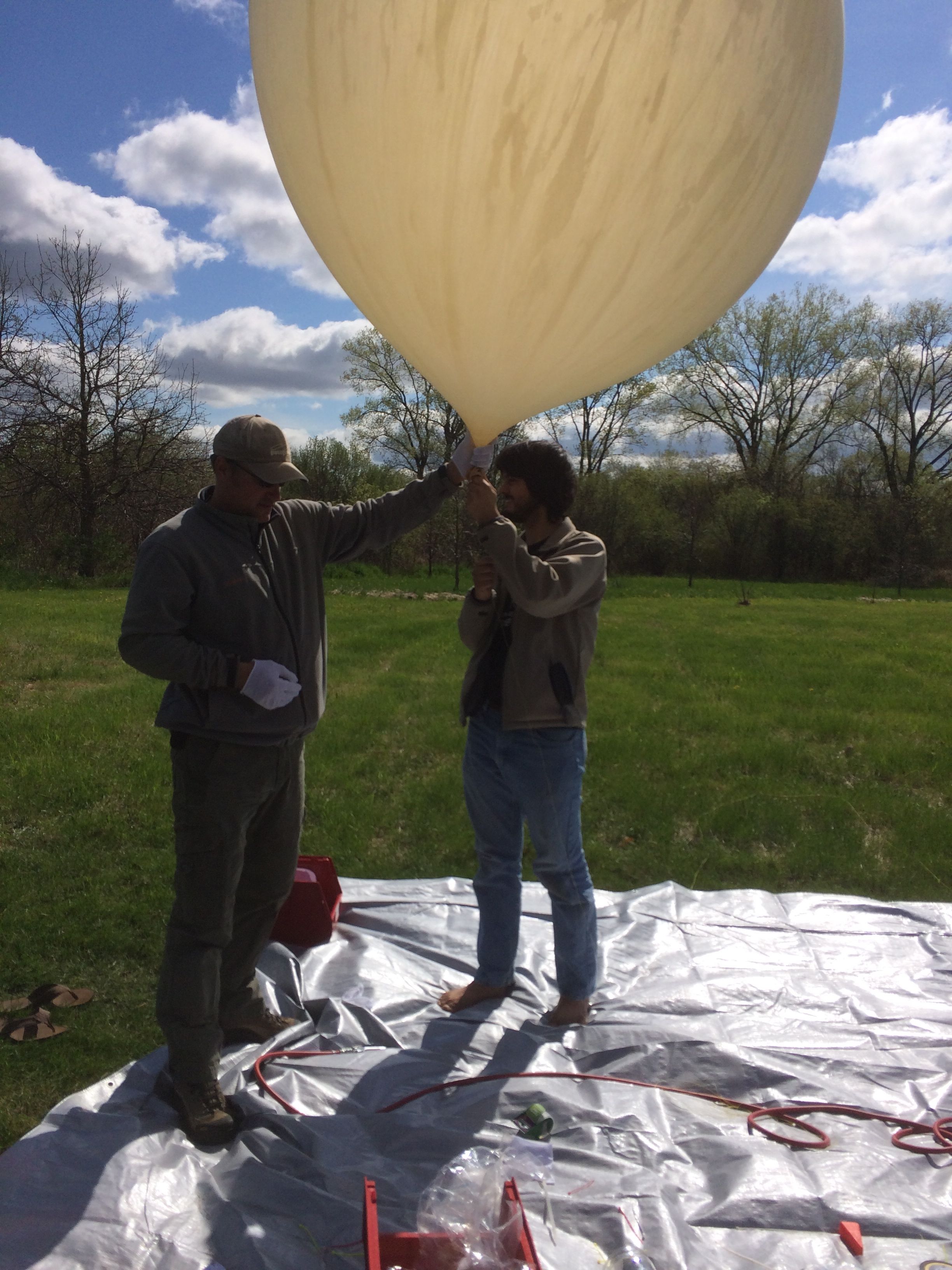
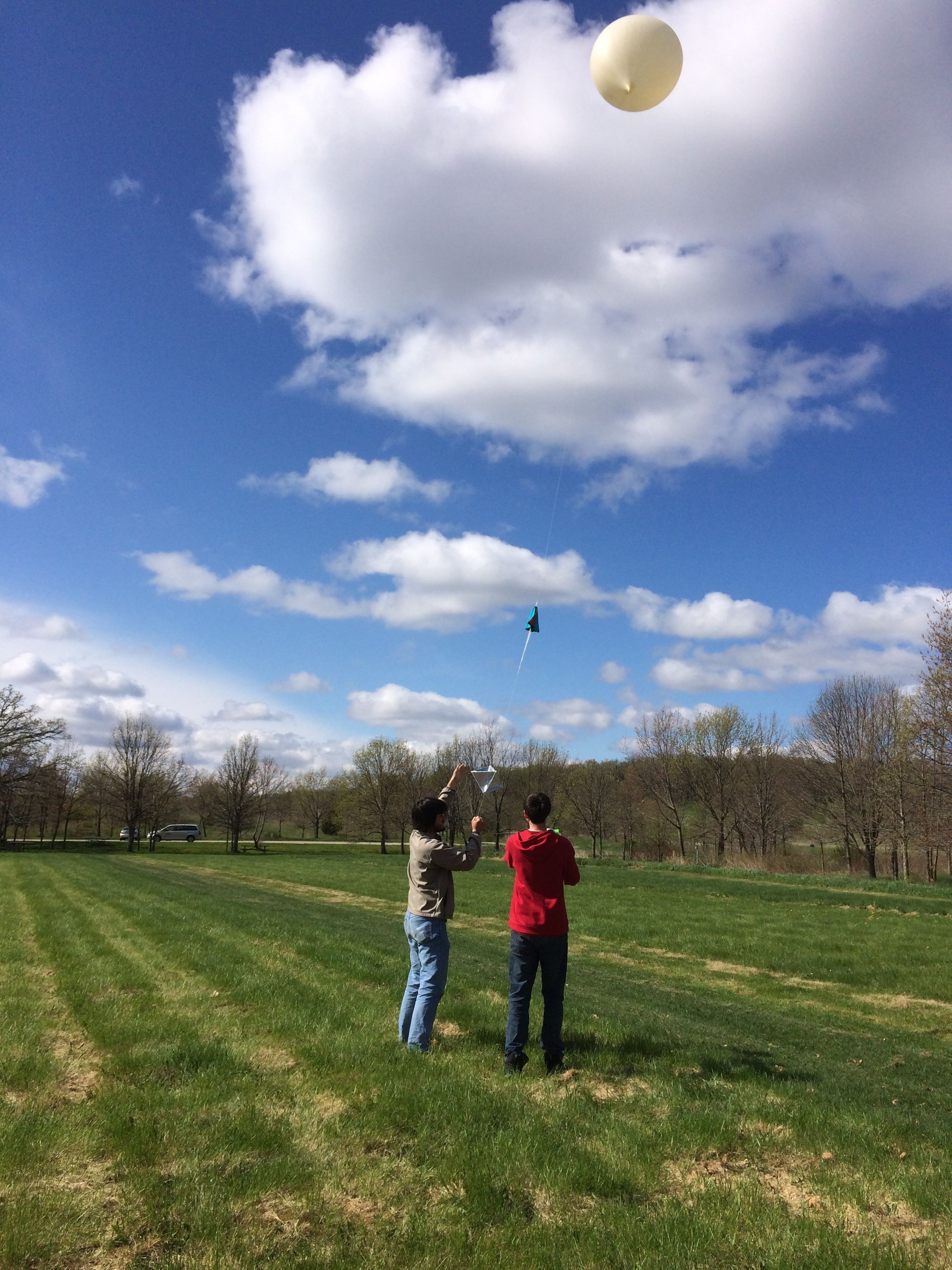

November 2014 Payload finally recovered!
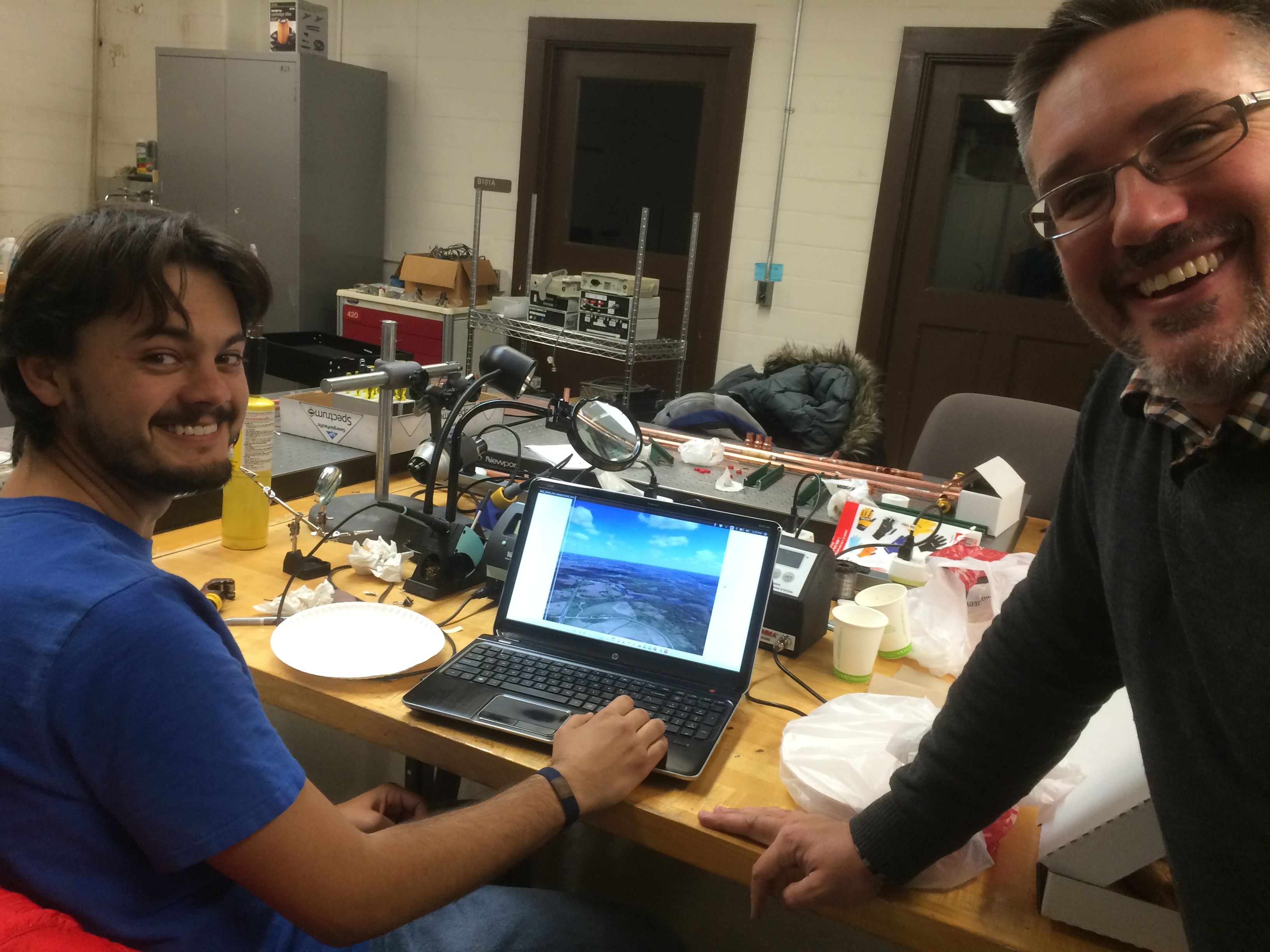
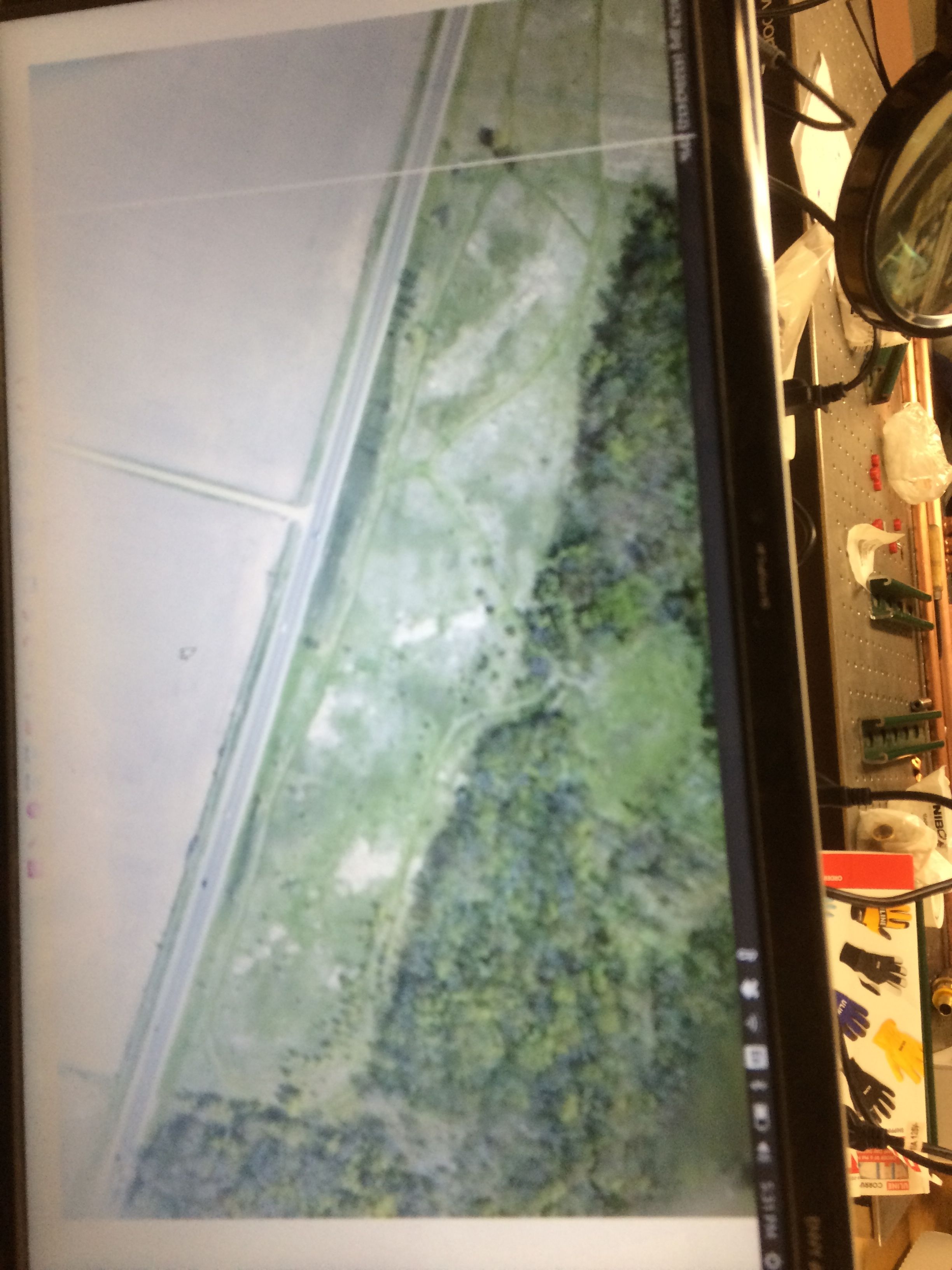
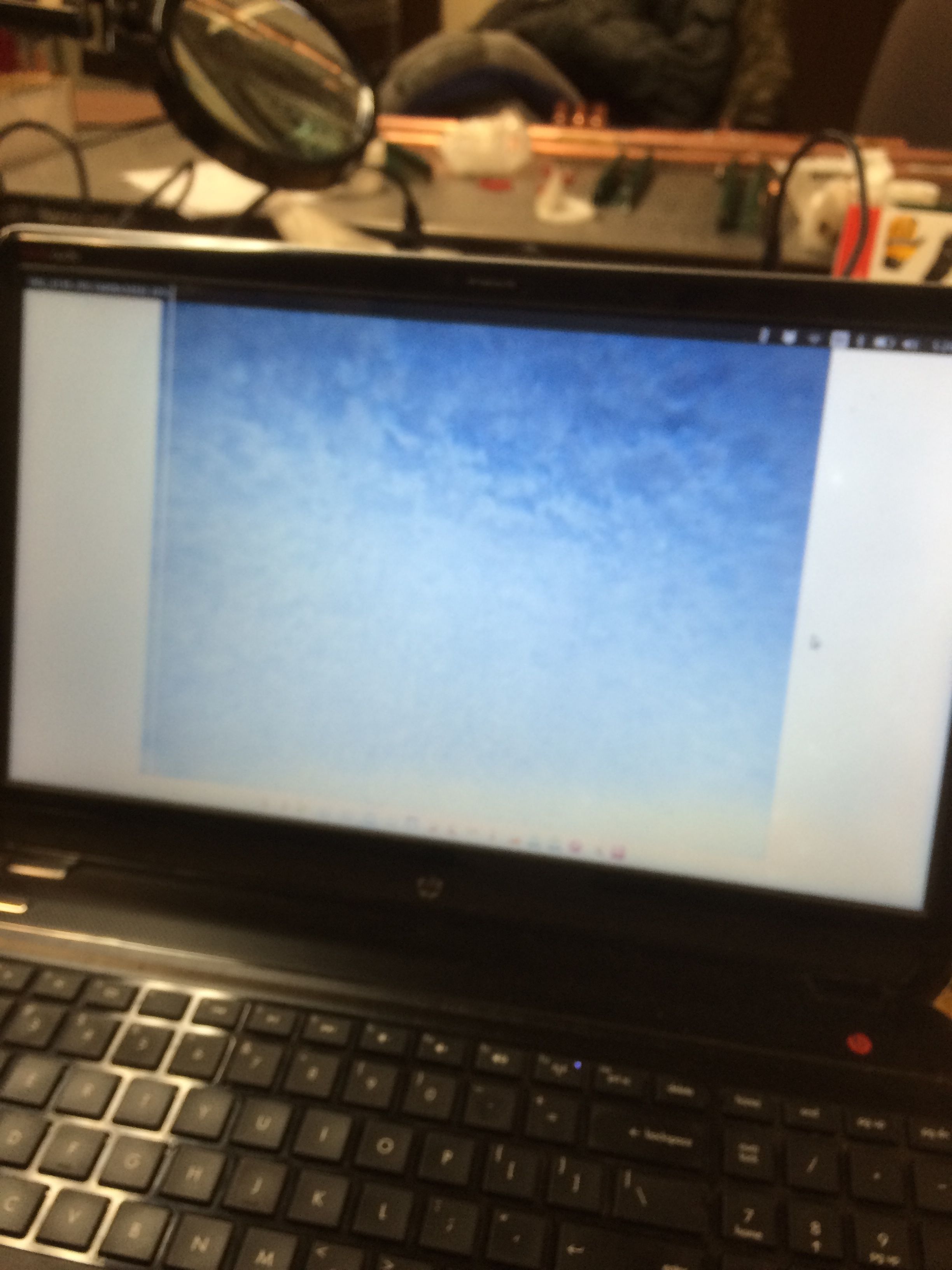
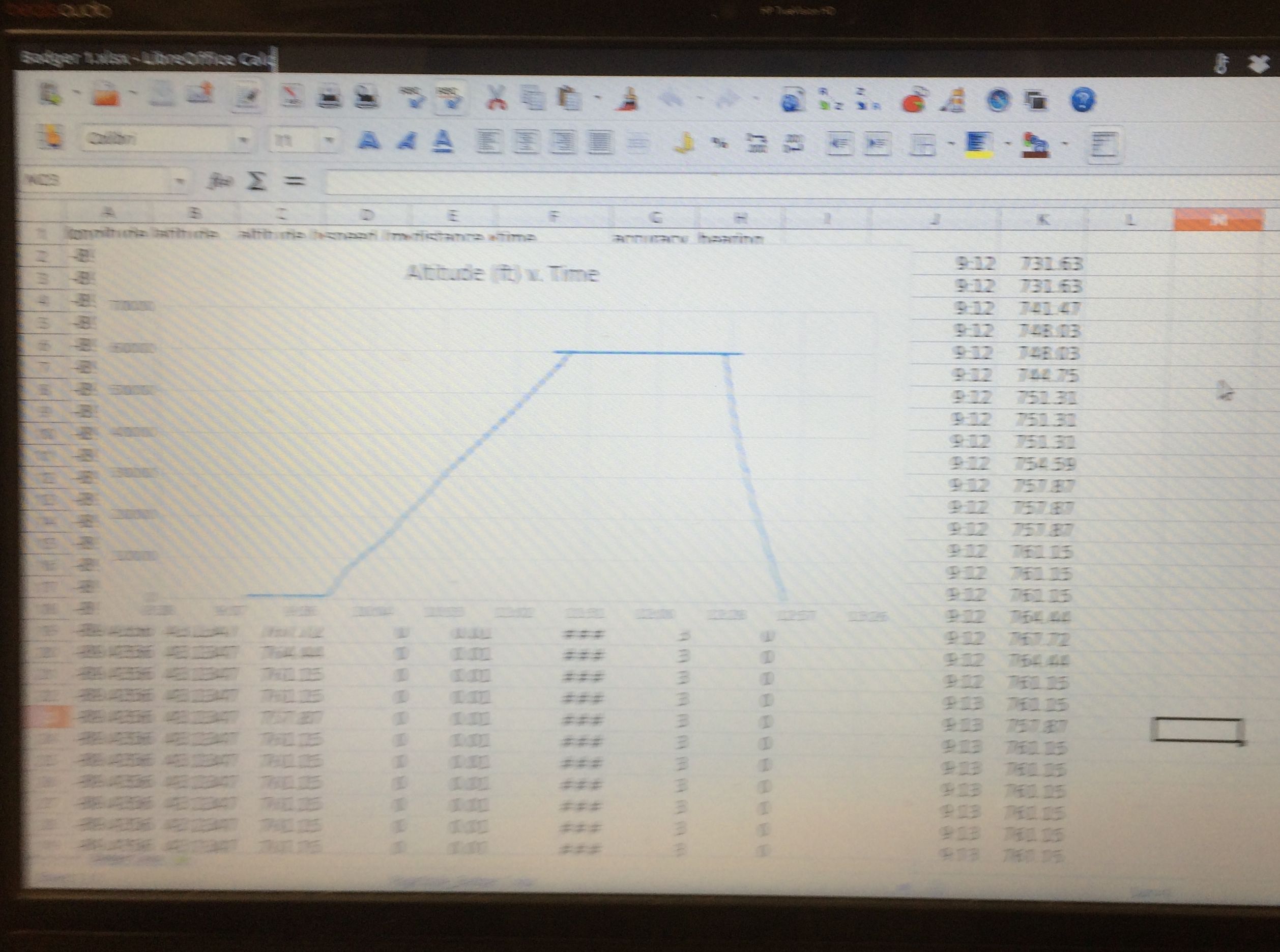
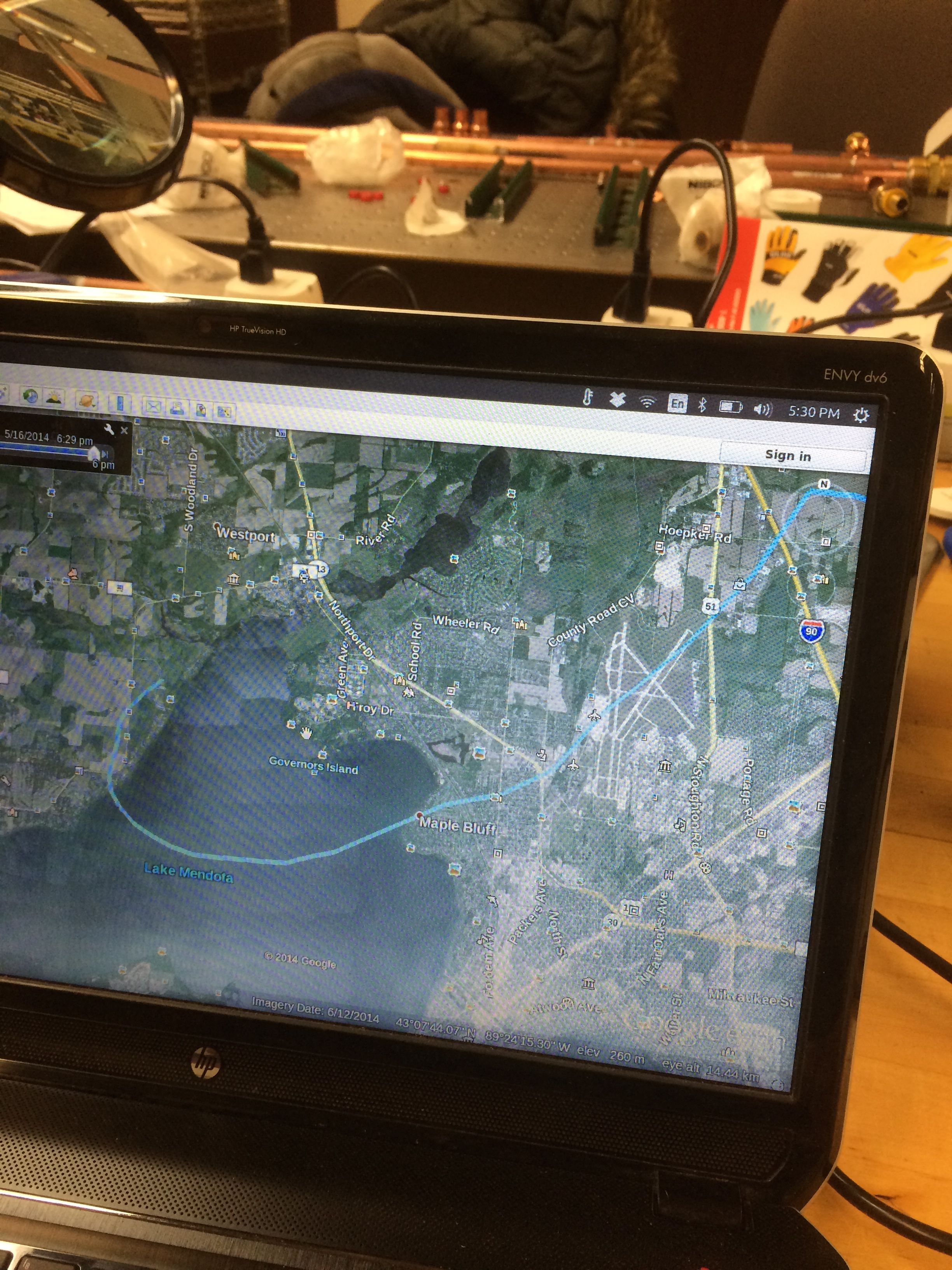
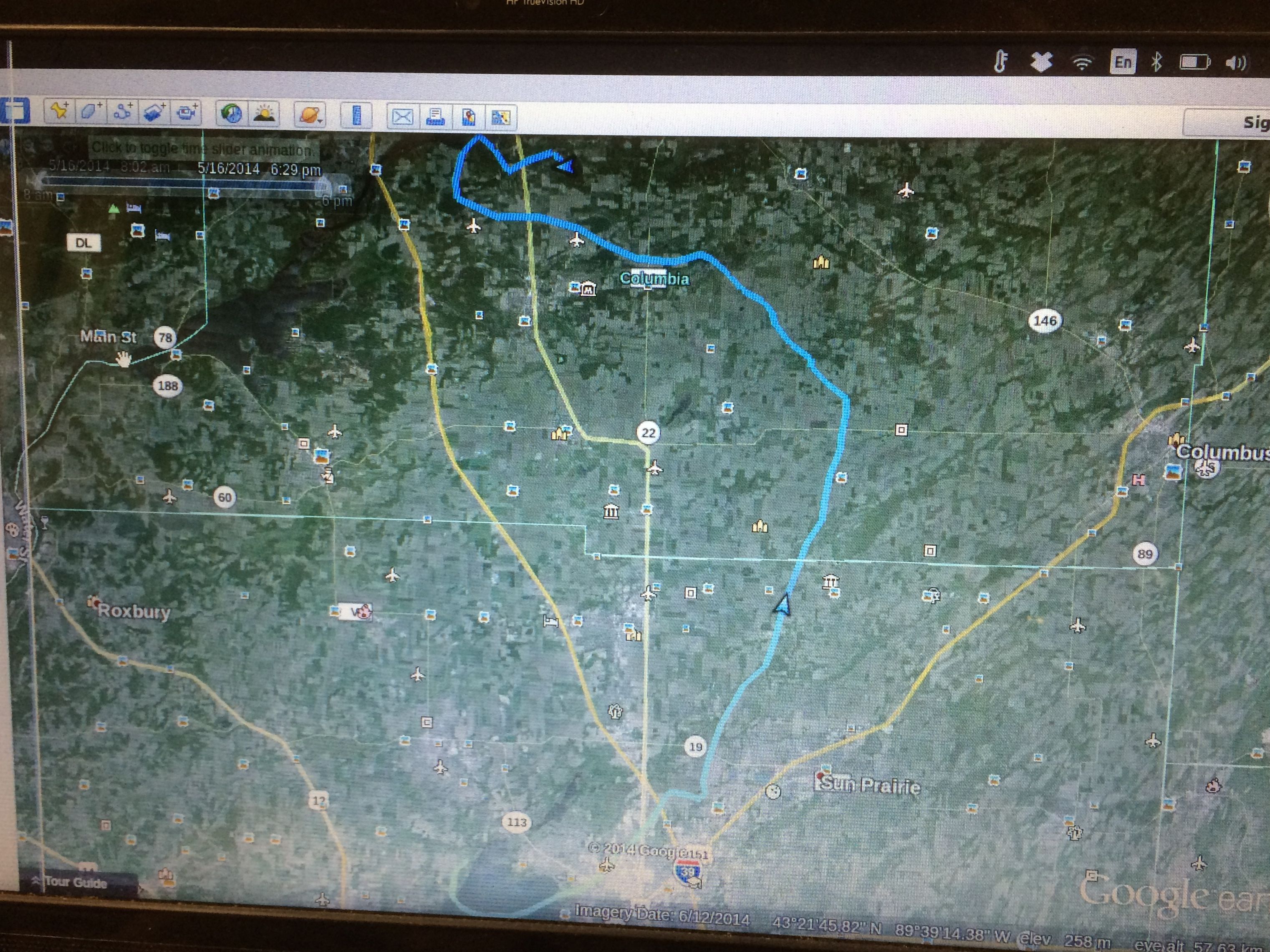
Why wouldn't you want to do view the world from 100,000'?
This project used a weather balloon on 16 May 2014 to send a payload of our design contaning a GPS transmitter and photosnapping cell phone to the edge of space - about 100k feet. Watch the launch: http://youtu.be/Lu-SKAhpXSM
The site Sparkfun has a pretty decent walkthrough that even prepares you for the distinct possibility of sending a grand worth of electronics aloft and never recovering it. Check out http://www.youtube.com/watch?v=wtXquYhY7wo. This has become rather a rage.
There are several facets to this project that could be broken down into smaller individual projects (this isn't comprehensive):
Balloon dynamics - capacity, predicted altitude, predicted flight path, controlled descent, etc.
Tracking and recovery - Currently looking at the TK-102 for tracking. It makes it easyt o track through SMS, but lacks altitude tracking.
Pretty pictures - Videos, telescopic images, or even live imaging using CHDK and a simple radio transmitter.
Data Logging - What other data would you like to see? Pressure, cosmic rays, or fungal/bacterial spore load might be interesting.
Future payloads can be developed to:
- Measure the gravitational constant, G
- Measure the time dilation due to general relativity, as a function of altitude.
Maybe you want to glide back from space? Check out FPV to Space and Back at http://rcexplorer.se/. You can just fly your (obsolete every year) iphone and use Find My Phone to recover it. See video above. BTW, there are bacteria up there, possibly to blame for the snow in Wisconsin. Maybe someone could bring back some air samples and some biologists could take a look, figure out how to alter the climate around here, in a good way, if that is imaginable. ![]() - Duncan
- Duncan
http://www.nature.com/news/high-flying-bacteria-spark-interest-in-possible-climate-effects-1.12310
http://ngm.nationalgeographic.com/2013/01/microbes/wolfe-text --- Related: Rocket contest http://www.rocketcontest.org/
Registration for TARC 2014 is now open! Are you up for the challenge of building a rocket that can safely carry two raw eggs to a precise altitude of 825 in a total flight time of 48-50 seconds? Check out the full rules for more details on this year’s challenge. The 2014 Application Packet is now posted on www.rocketcontest.org. If you have any questions about forming a team or filling out the packet please don’t hesitate to email me at anne.ward@aia-aerospace.org .
Want to work with other Wisconsin students on this or rockets? Check out http://www.uwgb.edu/WSGC/students/ssp.aspx